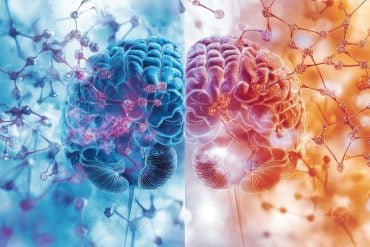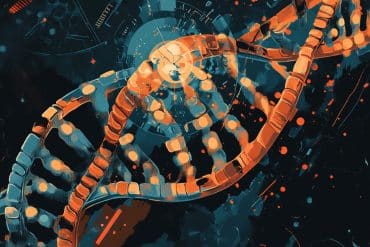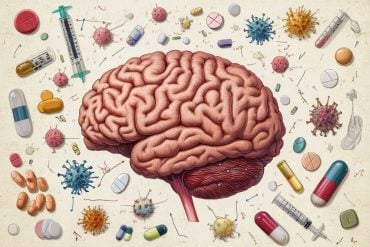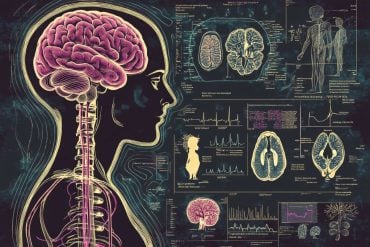Summary: Researchers measure changes in brain metabolism during tDCS.
Source: Elsevier.
The notion that low levels of electrical stimulation applied to the scalp, barely enough to create a mild tingling sensation, could activate the brain is a relatively new and somewhat controversial idea. The technique, called transcranial direct current stimulation (tDCS) has been reported to modify mood, emotion, and cognition, yet researchers lack any evidence for how – or even if – it directly modulates brain activity. Still, some researchers see its potential for a new strategy to treat psychiatric disorders.
A new study in Biological Psychiatry is the first to measures changes in brain metabolism during tDCS. Led by senior author Shirley Fecteau of the Université Laval in Quebec, Canada, the study reports that tDCS increases levels of the neurotransmitters glutamate + glutamine-glutamate is the main activating chemical messenger in the brain-and N-acetylaspartate (NAA), an indicator of neuronal health. Both of these neurotransmitters support learning and adaptation in the brain.
“These interesting data provide chemical evidence suggesting that tDCS may activate the human cerebral cortex,” said John Krystal, Editor of Biological Psychiatry. “This type of change would seem to be critical for producing behavioral and perhaps therapeutic effects.”
In the study, the researchers applied a single tDCS session to 15 healthy participants for 30 minutes at a current intensity of 1 mA, considered a mild dose. They stimulated the prefrontal cortex, a brain region involved in behavior and cognition. During stimulation, the researchers acquired magnetic resonance spectroscopy scans to measure changes in neurotransmitter levels in the prefrontal cortex and in the striatum, an important region involved in many functions including reward and learning.
In participants who received tDCS, first author Antoine Hone-Blanchet measured a rapid increase in prefrontal NAA, within 15 minutes of stimulation, and in striatal glutamate + glutamine within 30 minutes. The levels returned to normal immediately at the end of the session. According to Fecteau, these results suggest that tDCS has a rapid but short-lived excitatory effect at and downstream from the stimulation site.
“These findings need to be replicated with greater sample size, but also compel for investigation on the neural effects of tDCS,” said Fecteau, noting that the scientific community and general population have been increasingly using tDCS over the prefrontal cortex in recent years.
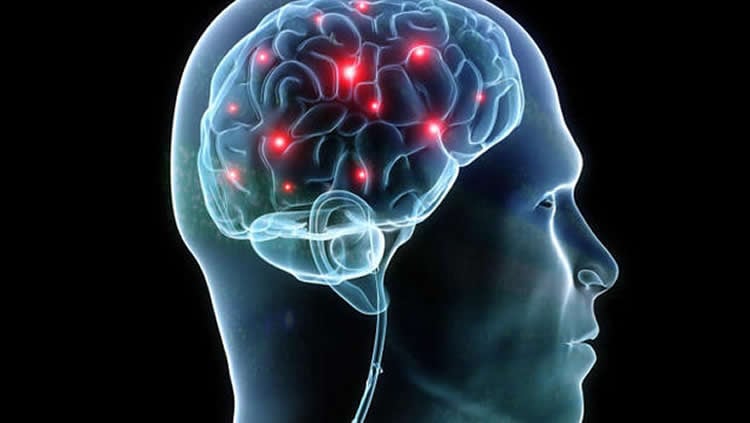
Researchers still do not know the effects of repeated or longer-lasting stimulation on neurochemical activity, which may be beneficial or detrimental, depending on the user, said Fecteau. Understanding the potential impact of the tool, positive and negative, will help harness its utility for effective and safe use in healthy and clinical populations.
Source: Elsevier
Image Source: This NeuroscienceNews.com image is credited to Allan Ajifo and is licensed CC BY 2.0.
Original Research: Abstract for “Online Effects of Transcranial Direct Current Stimulation in Real Time on Human Prefrontal and Striatal Metabolites” by Antoine Hone-Blanchet, Richard A. Edden, and Shirley Fecteau in Science Advances. Published online September 15 2016 doi:10.1016/j.biopsych.2015.11.008
[cbtabs][cbtab title=”MLA”]Elsevier. “Transcranial Direct Current Stimulation Raises Glutamate Levels.” NeuroscienceNews. NeuroscienceNews, 19 September 2016.
<https://neurosciencenews.com/tdcs-glutamate-neuroscience-5075/>.[/cbtab][cbtab title=”APA”]Elsevier. (2016, September 19). Transcranial Direct Current Stimulation Raises Glutamate Levels. NeuroscienceNews. Retrieved September 19, 2016 from https://neurosciencenews.com/tdcs-glutamate-neuroscience-5075/[/cbtab][cbtab title=”Chicago”]Elsevier. “Transcranial Direct Current Stimulation Raises Glutamate Levels.” https://neurosciencenews.com/tdcs-glutamate-neuroscience-5075/ (accessed September 19, 2016).[/cbtab][/cbtabs]
Abstract
Online Effects of Transcranial Direct Current Stimulation in Real Time on Human Prefrontal and Striatal Metabolites
Background
Studies have reported that transcranial direct current stimulation (tDCS) can modulate human behaviors, symptoms, and neural activity; however, the neural effects during stimulation are unknown. Most studies compared the effects of tDCS before and after stimulation. The objective of our study was to measure the neurobiological effect of a single tDCS dose during stimulation.
Methods
We conducted an online and offline protocol combining tDCS and magnetic resonance spectroscopy (MRS) in 17 healthy participants. We applied anodal tDCS over the left dorsolateral prefrontal cortex (DLPFC) and cathodal tDCS over the right DLPFC for 30 minutes, one of the most common montages used with tDCS. We collected MRS measurements in the left DLPFC and left striatum during tDCS and an additional MRS measurement in the left DLPFC immediately after the end of stimulation.
Results
During stimulation, active tDCS, as compared with sham tDCS, elevated prefrontal N-acetylaspartate and striatal glutamate + glutamine but did not induce significant differences in prefrontal or striatal gamma-aminobutyric acid level. Immediately after stimulation, active tDCS, as compared with sham tDCS, did not significantly induce differences in glutamate + glutamine, N-acetylaspartate, or gamma-aminobutyric acid levels in the left DLPFC.
Conclusions
These observations indicate that tDCS over the DLPFC has fast excitatory effects, acting on prefrontal and striatal transmissions, and these effects are short lived. One may postulate that repeated sessions of tDCS might induce similar longer lasting effects of elevated prefrontal N-acetylaspartate and striatal glutamate + glutamine levels, which may contribute to its behavioral and clinical effects.
“Online Effects of Transcranial Direct Current Stimulation in Real Time on Human Prefrontal and Striatal Metabolites” by Antoine Hone-Blanchet, Richard A. Edden, and Shirley Fecteau in Science Advances. Published online September 15 2016 doi:10.1016/j.biopsych.2015.11.008



